December 31, 2010
| Closing down 2010
One year is finished and a new one starts. It is not easy to say whether the one about to end was a good one for Magnetic Resonance, and it is impossible to predict what the new one will bring. I have witnessed a lot of progress in 2010 and even had the honor of contributing a little bit to some of it. I think that there is a good chance that this trend will continue. However, not all went so smoothly:
Conferences and other Events were unmistakably down. I now list also many Fairs and Exhibitions, and Events which are just barely related to MR, but even so the 2010 total is 120, down from the peak of 139 in 2008. It still amounts to one event every 3.0 days, but it is nevertheless an almost 14% drop. In addition, the attendance of many periodic meetings was smaller this year than in previous editions, so that the total reduction in the number of participants caused by the economic crisis may be close to 20%.
The worst problem, and one which can hardly be attributed to the economy, regards the publishing of NMR books (not MRI). Only ten titles appeared in 2010, and of these five are re-editions, two are edited collections, one is a very costly RSC Specialist Periodical Report, two are not yet out and it is doubtful whether they ever will (Spiess and Ghosh), and two cover extremely specialized topics (platinum and uranium hexafluorides, and biomarkers identification). Compared to the average of the previous 20 years, this looks like a 30-60% drop, depending on how you count re-editions. Hopefully the weakness is momentary; the counts and the nature of the planned 2011 titles seem to be back to normal.
In comparison, publishing of MRI books looked healthy in 2010, totalling 43 entries and exhibiting the usual ratio between medical and technical titles. The times when MRI titles plodded behind in-vitro NMR are clearly gone forever, with the ratio being presently 4:1 in favor of MRI and doubling every year ...
|
December 29, 2010
T1 filters
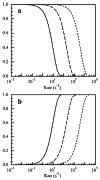
applied prior to
data acqusition
| PERFIDI are finally airborne
Almost six years ago I have started playing with the idea of what became the general-purpose pulse-sequence PERFIDI (Parametrically Enabled Relaxation FIlters with Double and multiple Inversion). It was one of about five potentially patentable ideas I had at that time and I have chosen PERFIDI to try for once in my life to get a patent and to see how the process worked and whether it was worth a dime. I have convinced my friend Paola Fantazzini (Physics Institute, University of Bologna) to go into it with me and we did the preliminary measurements to see whether it worked and proposed the topic to the University Patent Office. They were eager to do it since at that time the famous University of Bologna had less than 100 active patents which was putting them to a shame. I mentioned PERFIDI twice on this blog, once short after the patent was granted and once to complain about the worthlessness of NMR patents. Which complaint still stands. Even correcting for the incompetence of the afore-mentioned patent office, what I have learned was enough to never want to patent anything again. In practice, a patent will not only leave you as poor as before (or more so) but it will cut the wings of your otherwise nice idea and make it wither. An unrelated example: do you know why nobody talks any more about the SNIF-NMR method? It is a bright idea, but the Martin-Martin couple (Gérard and Maryvonne) have successfully patented it and now you find it only in a couple of their books. Not on Wikipedia, and even Google snobs it! So, if you want to patent anything, you are warned.
But fortunately the University, having seen no revenues rolling in, decided to stop paying the annual fees for our patent, so I guess that it is now free-for-all (we authors were given an option to maintain it privately, but we declined). Moreover, a valiant graduate student (Giuseppe Rinaldin) took fancy to the method and his nice Thesis work led to a recent paper in J.Magn.Reson. (for details, see the 2010, July 18 entry on the PERFIDI page). It is a limited application, but at least the icy spell around PERFIDI is breaking!
Actually, the technique can do incomparably more and I plan to work on it some more next year. In relaxometry of poly-disperse systems, the final goal - at least as far as I am concerned - is to try and replace a-posteriori ILT (Inverse Laplace Transform) methods with a-priori experimental discrimination. But what interests me even more is an aspect which we have never pulled through: applications of PERFIDI to high-resolution NMR spectroscopy which, in practice, should work as a new variety of ROSY (Relaxation Ordered Spectroscopy). I think that it will be a great tool for complex systems (for example protein solutions and, especially, metabolomics).
|
December 20, 2010
COMMENTS: 2
| Mercury in-vivo imaging?
Michael Gawrys from Göthenburg (Sweden) poses the following question:
I am looking into the possibility to make MRI studies in Hg-199 on humans in vivo. Do you have any information on the status in this field in both NMR and MRI?
In vitro NMR of mercury is well studied and corroborated by a rich literature. My simple Google search with the keywords "NMR Hg mercury" brought up over 100K search results, the very first of which is a nice introductory article containing a handy list of references. The interest in mercury stems mainly from the existence of innumerable organo-mercury compounds and from the fact that the element - as well as virtually all its compounds - is toxic for nearly all living creatures and thus represents a serious environmental hazard.
Sincerely, this is the first time I hear about MRI of mercury in vivo. The relative sensitivity of 199Hg with respect to proton is only about 0.5% and, in addition, the normal mercury concentrations in living tissues are extremely low (well below ppb's). Consequently, even techniques incomparably more sensitive than MR can not reveal it; as far as I know, only neutron activation is up to the task and that is hardly applicable in vivo :-)
I guess that any abnormal concentrations of mercury would need to be lethally high to be MR-detectable. Which, of course, may be the reason why you are asking (for example, I can envisage a possible interest in connection with mercury-containing antitumoral drugs). Apart from this, MRI has been used to reveal brain lesions caused by mercury containing cosmetics (doi 10.1007/s00431-010-1333-1) but that, of course, was standard proton MRI.
Another reason behind your proposal might be the detection of mercury in implants (such as in mercury batteries). I don't know whether any such implants exist (and are legal) but if they do, MR could be perhaps used to pinpoint the implant position, and the same applies to mercury-containing devices (such as detonators) concealed in body cavities.
In general, however, I guess that in most situations where MRI can detect the presence of mercury, so can CT, without any need for a new hardware and at a fraction of the cost. With their heavy nuclei, mercury atoms are excellent X-ray absorbers and scatterers.
If I have not yet deterred you and you still want to try, I recommend to use as high field as possible. At 4 Tesla, for example, you will find 199Hg around 30.5 MHz and you will need a transmit/receive gear tunable for that frequency.
COMMENTS:
28 Dec 2010: Michael Gawrys:
Thanks a lot. I have read your blog and the mercury skin whitening cream paper, and they are very interesting.
My concern though, is the main human mercury problem in the western world, as stated by WHO. Mercury slowly is stored in many parts of the body from the 50% mercury in our dental amalgam fillings. Every stimulation by chewing, toothbrushing, by intake of coffee, salt, sour and hot meals, rises the emission for 90 minutes with a Hg-vapour concentration of around 100 μg/m3. www.iaomt.org/. In the long run this leads to different degrees of chronic mercury intoxication for many people. As you mentioned, the lethal and of course poisonous levels of Hg in the body are low, and MRI has quite a low detection sensitivity. But I believe that it might be possible to detect Hg-199 in this way in the future. Today the fillings can be clearly observed on X-ray pictures at the dentist.
I have read about Parallel MRI. Do you think this could be a way of getting higher sensitivity, apart from the goal to get faster fMRI?
Regards, Michael
29 Dec 2010: Stan
Now that your angle is clear, I have boned up a bit on Wikipedia about mercury poisoning, but I could not find there - nor anywhere else - any indication about what concentrations inside the body we are talking about. But let us try to work out something very crude starting the other way round.
In the fields of 3 to 7 Tesla, the spatial resolution of proton MRI is at best about 50 μm (the side of a minimum cube-shaped voxel). This is in tissues where proton molality (mols per liter) is about 100 (just a bit below that of pure water). Since 199Hg receptivity is about 0.005 that of proton (considering also the natural abundance of the isotope), we would need 100/0.005 = 2e5 mols of mercury per liter, or 4e7 g/l, to achieve the same Hg-image quality. This is of course physically impossible. But let us say that we can live with a much lower spatial resolution: say 5 mm instead of 50 μm. This makes for a "voxel" which is larger by the factor (5/0.05)^3 = 1e6 and thus allows to drop the detectable mercury concentration to 4e7/1e6 = 40 g/l. A lot, but physically possible. Taking an even larger "minimal voxel", say a cube with a side of 40 mm (still useful, I guess), the threshold drops down below 100 mg/l. I will also concede (reluctantly) that optimizing the receiver coils, using multiple ones, and acquiring for longer times than usual, we might succeed to push the limit further down by another factor of maybe 2-4.
That leaves us with a detection threshold estimate of several tens of milligrams per liter which is probably still too high by several orders of magnitude for your purposes, even considering that the metal concentrates preferentially in specific organs/tissues. But to judge that goes beyond my qualifications.
As for possible future improvements in sensitivity, an orders-of-magnitude jump can not be excluded, but it would require revolutionary new detection principles. Nothing that is presently on the horizon. Parallel MRI regards essentially the use of N independent coils and receivers and optimizing the data sampling strategies to squeeze as much meaningful info per unit time out of the scanner. The gains in overall image quality are relatively modest, but in those applications where this is used even a modest 20% gain in S/N is well worth a paper. A factor of 2 would kick off a major celebration.
|
December 9, 2010
| A tsunami of MR events next January
I have at last managed to make an overdue order in my list of and I have even managed to weed out all broken links not just from the forthcoming events page, but also from the new 5-year historic archive of NmrEvents_2005-2009.
While doing so, I was surprised by the somewhat unusual number of genuine MR events which will take place next January - nine are now listed, with a tendency to keep growing. Moreover, many Conferences which might look as being far away (like the ENC in April) have deadlines in January, so if you plan to attend any, better check whether you are still in time to prepare your stuff :-)
I owe a thank you to all those who help to maintain this list by letting me know about any forthcoming events (conferences, workshops, courses, seminars, ...) and also by catching occasional errors and broken links.
|
December 8, 2010
| Electron MR in Poland: a free collection of papers
In an October 20 entry on Polish Electron Magnetic Resonance Prof. Czeslaw Rudowicz announced the rebirth of the Polish EMR Group, and also an impending publication of a vast collection of over 50 EMR (EPR/ESR) papers by Polish Authors.
The collection has now been published as a special issue of the open-access online Journal Current Topics in Biophysics (Volume 33, Supplement A), commemorative of the late Prof. Jan Stankowski, a prominent historic figure in Polish EPR. You may want to consult the contents of the free issue before reading any of the papers.
Have a nice reading :-)
|
November 30, 2010
| NMR**2 and the Anniversary that Wasn't
There is a nice, cosy and little publicized NMR meeting held [about] twice a year at the University of New Mexico NMR Facility in Albuquerque. Its offitial name is New Mexico Regional NMR meeting but it is better known under the nickname NMR**2 (NMR-squared). Unfortunately, I have unintentionally skipped it on my, even though I was averted about it (sorry).
Feeling guilty and wanting to make up for the omission, I was browsing through the traces left on the Net by this year's edition (held on November 12-14) and found a few interesting ones, like this page on the Japanese MR Technology website; the glimpses of T.Haishi are very nice. What caught my fancy, though, was the fact that all mentions of the last installment of the meeting labelled it as "28th Anniversary". Since 28 is hardly a round number (2*2*7), and knowing that the man behind it all is Eiichi Fukushima of ABQMR, I wrote to him, asking whether there was an explanation. This is his answer:
Hi Stan,
The 28th anniversary was an accident. I thought we were up to 30 and went ahead to plan it as such. When Karen Ann pointed out that we were only 28 years into this, we continued anyway, thinking that anything that got started should be finished. Besides, some of us may not last another two years.
The meeting was a success. There are some photos on the website at nmr.unm.edu that Karen Ann has posted. Alfred Redfield is still a wonderful scientist with a lot of new ideas. [Allen] Garroway gave a nice account of interacting with Sir Peter [Mansfield] when he had the idea for imaging. Also, the discovery of "slice selection" that Al did with Peter [Mansfield] and [Peter] Granell. Then he talked about the Southwest Research Institute's projects in the '70s and '80s in their industrial NMR. Such amazing stuff! Armando De Los Santos of SwRI actually sent me photos from their early efforts that we had not seen yet. You may be interested in some of them. When I get home, I can send you some ...
Best wishes to you, Eiichi
Thanks, Eiichi, this is certainly a valid explanation! Now I can work out myself why, on your ABQMR website, you number it as 55th :-) Above all, I hope that your comment on the durability of human beings is purely generic and that we will meet at the true (30th) anniversary NMR**2 meeting. You have definitely stimulated my NMR history brain ganglia and I plan to attend. And, please, do mail me those photos (with a few lines of comment) - I am sure that many of us will enjoy them.
Note: I hope that I got all the Al's and Peter's right in my square-bracketed additions.
|
November 27, 2010


Very livable:
Portland,
Oregon
| Belated glimpses of SMASH 2010
It is a shame to write about a meeting two months (!) after it took place, but since I was there and this, after all, is my blog, I feel I ought to write something about it, lest my friends and family accuse me of having spent all the time fishing trout and salmon in the magnificent Oregon wilderness. Because the meeting was held last September (26-29) in the pleasant city of Portland, Oregon (USA).
As you know, SMASH stands for Small Molecules Are Stil Hot and, most appropriately, this year the meeting was held jointly with CoSMoS, the Society for Small Molecule Science. The two organizations both focus on small organic molecules, a term which [today] indicates molecular weights interval of maybe 2 - 500 Daltons, with a peak between 200 and 300 Daltons. In other words, mostly drugs (both legal and illegal), natural products and environmental pollutants. Consequently, the annual meeting is always heavily frequented by pharmaceutical researchers and Companies, and attracts a keen interest of vendors of all kinds of NMR spectroscopy equipment since, in this field, NMR spectroscopy is a key tool.
I got an impression that this year's edition, despite the co-participation of CoSMoS, was somewhat reduced. Of course, SMASH was always a relatively small meeting (200 - 300 participants) with a high-quality program. Since I did not check the numbers, the impression could be subjective and due to the fact that I missed several friends who always used to attend. Otherwise, the drop must be attributed to the current economic crisis which has caused a particular havoc among pharmaceutical Companies (most of the big ones have closed a number of production facilities).
As always, the meeting ran smoothly and the program was excellent. I have listened to many presentations and understood most of them, even though I am hardly a chemist. For me, the most interesting were the presentations by Warren S. Warren on the innovative techniques being developed in his group at Duke University (some of them employ pretty small molecules to deliver extra polarization to the imaged areas) and by Howard S. Taylor about his patented method of de-noising NMR spectra which manages to pick out and quantify even peaks totally buried in noise. I have also enjoyed the workshop on RDC's (Residual Dipolar Couplings) organized by Roberto Gil and Burkhard Luy. There I have learned several very practical things, such as how to prepare the axially oriented medium, dissolve therein the molecules to be studied, and evaluate the acquired data using specialized software packages (Mspin and PALES).
Unlike the rich program, the vendor exhibition looked to me a bit subdued, especially when compared with previous editions. Was this another effect of the crisis, or is it that people are simply getting used to looking up all the information they need on the Internet? Meaning that handing out leaflets and brochures is out, while social games are in? This would explain why the heaviest traffic was around the friendly Mestrelab Research booth: they ran a contest on how fast one could verify a molecular structure against a spectrum using an alpha version of an automatic structure verification (ASV) feature in their Mnova package. The fastest structure verifier walked away with an iPad but I am sure that that was not the point.
Finally, what role did I play, apart from visiting a nearby pub with draught Guinness? I have delivered three presentations about the recent software I am developing with Carlos Cobas, Felipe Seoane and others (if interested, see the slides:
-1-,
-2-,
-3-.
But that was at the Mestrelab User meeting prior to the SMASH main event, leaving me ample time during the main event to loaf around and criticize everybody.
Totally unfair, but gorgeous!
|
November 25, 2010
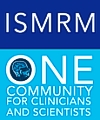
| New MR Wiki
ISMRM, the International Society for Magnetic Resonance in Medicine and its SMRT Section for Magnetic Resonance Technologists have started an ISMRM MR Wiki, a new Wiki focusing on MRI. In her latest mailing, Roberta Kravitz, the ISMRM Executive Director, says "our goal is the largest MR Wiki resource in the world, so help us achieve our goal". The plea is addressed to members of ISMRM and/or SMRT since you must be a member to register as an Editor.
BTW, to me the acronym SMRT always sounded a bit ambiguous since in my mother language (Czech) "smrt" means "death". To fend off any allusions, I raise a cup of sparkling Italian spumante for a toast to the long life and rich content of the newborn ISMRM MR Wiki.
At this point, "The" Wikipedia apart, I count a total of six MR Wikis, though I suspect that there must be more (please, let me know).
COMMENTS:
26 Nov 2010: myself :-)
Regarding ISMRM but extending beyond: I read on the web-page Future ISMRM Workshops: "If you are interested in our International Global Outreach Program, please contact one of our Local Global Organizers". Fantastic! I wonder who is better off financially: a Local Global Organizer or a Global Local Organizer?
Another point: a reader writes that "mother language" is a sexist term. I should use "native". Ok, and do you know that "death" (= "SMRT") is of a female gender in all Slavic and Latin languages? What about that!
|
November 24, 2010
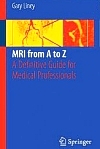
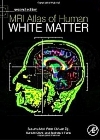
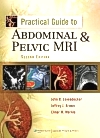
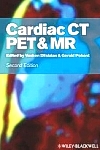
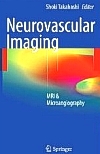
| New MRI books
During the last two months six MRI books became available (the situation is less rosy this year when it comes to other branches of MR). The front covers are shown in the left column, with links to Amazon for those wishing to buy any of them. Three are re-editions, all heavily updated, and three are new first editions. Here are the titles:
- Liney Gary,
MRI from A to Z: A Definitive Guide for Medical Professionals,
2nd Edition, Springer 2010. ISBN 978-1849961349.
An introductory and/or reference paperback organized as alphabetically-ordered 'entries'.
Useful to everybody in the field. 1300 entries and 100 illustrations cover a lot of terrain.
- Oishi Kenichi, Faria Andreia V., van Zijl Peter C.M., Mori Susumu,
MRI Atlas of Human White Matter,
2nd Edition, Academic Press 2010. ISBN 978-0123820815.
The only atlas to provide detailed anatomy of human brain white matter! Diffusion tensor imaging (DTI) allowed a clear visualization of 170+ regions and their boundaries as well as unprecendeted insights into brain connectivity.
- Leyendecker John R., Brown Jefferey J., Merkle Elmar M.,
Practical Guide to Abdominal and Pelvic MRI,
2nd Edition, Lippincott Williams & Wilkins 2010. ISBN 978-1605471440.
Thoroughly illustrated and problem-oriented guide to performing and interpreting abdominal and pelvic MRI studies. A must for all practitioners as well as all physicians who need to interpret abdominal MRI images.
- Dilsizian Vasken, Pohost Gerald M., Editors,
Cardiac CT, PET and MR,
Wiley-Blackwell, August 2010. ISBN 978-1405185530.
Timely, comprehensive, concise and easy-to-follow information on advanced imaging techniques.
The book also outlines AHA guidelines, Statements, and Performance Measures and includes comparisons with European guidelines.
Kindle edition is also available.
- Takahashi Shoki, Editor,
Neurovascular Imaging: MRI & Microangiography,
Springer 2010. ISBN 978-1848821330.
Divided into three sections- normal anatomy of brain vessels; neurovascular imaging in pathology; and anatomy and imaging of spinal vessels. Written and edited by a group of acclaimed experts in the field, the text contains a rich collection of images.
- Jones Derek K., Editor,
Diffusion MRI: Theory, Methods, and Applications,
Oxford University Press 2010. ISBN 978-0195369779.
A truly comprehensive compilation of the science and application of diffusion-enhanced MRI techniques in the study of human brain. 8 Sections and 47 Chapters written by the world experts expands greatly the monographic coverage of diffusion MRI (for prior works see, in inverse chronological order, Johansen-Berg & Behrens, Koh & Thoeni, Reeder & Mukerjee, Mori and Le Bihan).
Let me use this opportunity to draw your attention to the hopefully complete list of MRI monographs I am trying to maintain. I think that it is an initiative useful to the whole community but, of course, the goal of completeness can not be achieved without your collaboration (especially that of the Authors). Mine is a completely free-of-charge promotion platform. My main source of information is Amazon, but occasionally there are books not available on the Amazon which I would like to list as well.
I do make some money on Amazon sales, but that is really not a factor since the total MRI incidence on those commissions is just about $130/year and I spend more than that on buying some of the books I advertize. Meaning that there is no way to see this as a venal venue :-)
|
November 23, 2010

Meta-material
micro-antenna
| Meta-materials for MR detectors?
A student send me an e-mail, the core section of which goes like this:
Dr.Sýkora,
I was just reading your blog entry from December 15, 2007 on why MRI's use coils vs. antennas ... As an undergrad at the University of Utah, I can't say I understand everything but I walked away with the impression that coils are better at listening to magnetic fields than plain antennas are? Is that right?
The reason I ask is because I've seen some cutting edge research on flat meta-material based antennas. These antennas apparently have the promise to be "frequency-agile" and I'm thinking may have the potential to be put into MRI machines? I'm just concerned that there must be some reason that flat antennas are no good compared to their coil relatives?
I very much hope to hear back from you ... Thank you, (name witheld)
Ok, let me attempt a fast answer:
In MR we want to detect tiny rotating magnetic fields and our basic desire is to maximize the signal with respect to the noise. For all we know so far, there is almost no radiation (the MR phenomenon appears to be local and little electric component seems to be involved). This makes the NMR coil something conceptually quite different from an antenna.
While MR coils are optimized to generate/sense magnetic fields inside the sample volume, antennas are optimized to emit/receive radiation to/from far-away, which is something quite different. In addition, electromagnetic radiations are very specific things with tightly interwoven electric and magnetic fields, quite different from objects with magnetic field only. According to Maxwell equations, it is this inner structure of an electromagnetic wave that permits it to travel over large distances. Efficient antennas therefore always exploit both the electric and the magnetic components of the radiations and, in case of doubt, the antenna engineers would rather drop the magnetic component than the electric one, since the latter permits stronger interactions and thus better efficiency.
Regarding the new artificial meta-materials composed of myriads of nanometric mechanical and electrical structures, I expect that they are presently being optimized for communication transmissions and not for the detection of local rotating magnetic fields. Consequently, I doubt that they can be used in MR with advantage as is. However, the principle looks to me healthy and materials of a similar kind could probably be designed and optimized for the specific purpose that interests us. So, who knows, maybe something of this kind might finally - after 65+ years - send the NMR coil into retirement.
Cheers, Stan
|
November 22, 2010

1,2: No apodization
3,4: Sine-bell, 10°
Integrals OK
5,6: Sine-bell, 0°
Integrals null
| FID apodization and ratios of peak integrals
A friend remained a bit puzzled last week by my casual statement that no free induction decay (FID) apodization (or weighting) could change the ratios of peak integrals in the corresponding spectrum unless its starting value was zero. This kind of doubt is an evergreen in NMR as well as in most FT spectroscopies. I keep encountering it several times a year and, more seriously, I have found statements to the contrary even in otherwise respectable books.
So it is perhaps time to establish a basis for my future references on this topic.
The matter is actually quite simple. Its essence consists in the realization that
(a) the amplitude of the FID at time t = 0 is proportional to the integral of the spectrum and
(b) the Fourier transform (FT) is a linear operation so that (a) applies to all its components.
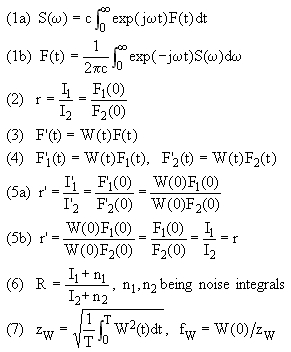
The first point follows from the FT relations (1a) and (1b) between the FID as a function of time, F(t), and the spectrum S(ω) as a function of frequency. Setting t=0 in Equation (1b), one obtains statement (a).
The second statement implies that if we have two distinct spectral peaks P1 and P2 and consider the spectrum as their sum, then F(t) must be the sum of two FIDs, F1(t) and F2(t) corresponding to the respective peaks.
It follows that, no matter how dissimilar may be the shapes of the peaks, their total integrals I1 and I2 are proportional to F1(0) and F2(0), respectively. Hence Equation (2) for the ratio r of the two integrals.
Let us now multiply the FID by an apodization function W(t), creating a new one, F'(t), as indicated in Equation (3). The exact shape of W(t) does not interest us here; it can be anything, as long as Equation (1a) remains integrable when F(t) is replaced by F'(t) in order to obtain the modified spectrum S'(ω).
The multiplication by W(t) is again a linear operation and therefore all components present in the FID get multiplied by the same function W(t) as shown in Equations (4). It follows that, though the integrals I1 and I2 get scaled by W(0), the apodization does not change their ratio r (Equations 5a and 5b).
Except (there is always an except) in one case! When W(0) = 0 the two integrals I1 and I2 become simultaneously zero and their ratio becomes indefinite. After any such apodization the peaks always exhibit negative lobes which compensate the positive parts of the peaks and null the integrals. Typical examples of such weighting functions are sine bell with phase 0 and exponential difference.
Consequently, the only condition for the integral ratios to be preserved is W(0) ≠ 0, making the second passage in Equation (5b) legitimate. But what happens when W(0) is not quite zero, but just close to it (say, a sine bell function with phase angle of 5 degrees)?
Well, since there is always some experimental noise, the estimated ratio of the integrals is not really r = I1/ I2 but rather the value R shown in Equation (6), with n1 and n2 being random contributions originating from the noise (integrals of the spectral noise over the integration windows). The apodization not only multiplies I1 and I2 by W(0) but, as can be easily shown, it also multiplies the rms value of the noise by the non-zero factor zW shown in Equation (7).
What really matters in practice is the factor fW = W(0)/zW which describes the expected effect of the apodization on the integral-to-noise ratios. For quantitative assays, it would be best to use only apodization functions with fW ≥ 1.
It would be nice if NMR data evaluation programs (such as Mnova which I have used to produce the Figures on the left) dynamically displayed the ratio fW every time a User chooses an apodization function. Notice that, since zW depends upon the total acquisition time T or, in practice, upon the number of data points, fW can not be just pre-calculated for every W(t).
------------------------
Notes on the above Fourier transform Equations (1a) and (1b):
The symbol j denotes the imaginary unit. The constant c is conventional and there are at least three widely used settings for it: c=1, c=1/(2π) and c=1/√(2π).
Fortunately, the choice does not affect our discussion. There are also some interesting nuances when reducing the physically rigorous 'continuous' formulas shown here to their closest 'discrete' approximations applicable to digitized data but, again, these aspects have no influence on the above discussion.
|
November 17, 2010
| Directory of MR Companies revamped
I have updated and extensively checked my directory of MR Companies. There were quite a few substantial additions as well as a few marginal defections and a major merger/acquisition. I have also introduced two new categories - the educational NMR instruments vendors and a similar category for educational MRI hardware. I still have to insert quite a few Companies producing electronic units (RF preamps and amplifiers, splitters, circulators, attenuators, loads, etc); give me a few days (after all, they are not really MR companies).
The most prominent change is the replacement of almost all references to Varian by Agilent due to the acquisition of the former by the latter. According to the early announcements of the pseudo-merger Varian was supposed to continue operating under its own trademark and logo, but presently the opposite is happening - all traces of Varian are being systematically erased and replaced by Agilent. The ex Varian personnel, however, is apparently quite happy within the new organization and there are even indications of new hiring. Does this mean a new challenge for Bruker Corporation?
It sure looks so ...
There are several new entries in my list: Columbus Superconductors and Paramed Medical Systems, both in Genova (Italy), and - the most recent and hottest one - picoSpin in Boulder, Colorado (USA). I have insights on all of them to share with you in the next few days. Another new entries (though not Companies) is West Valley Imaging Systems, a Californian dealer in used MRI systems, and Anke, a Chinese manufacturer of MRI scanners.
Presently there are just two suspected broken links in the Directory.
Please, all those who think that they should be listed, or have any objection to their present listing (category, wording, URL), let me know. Since my goal is a truly complete, living Directory, the listing is free of any charge.
|
November 15, 2010
Did you know?

Isidor Isaac Rabi
coined the term
Magnetic
Resonance
And who first said
electron had Spin?
Or the proton?
| The Santander Talk
Time is flying by and I am again behind. But I was really busy, coding and travelling places.
Among other things, I was invited to University of Cantabria in Santander (Northern Spain) where I delivered an introductory MR talk entitled The Many Walks of Magnetic Resonance: Past, Present and Beyond. It was intended as a stimulant for physicists who are approaching Magnetic Resonance for the first time. Of course, I could only say as much as would fit into slightly more than 1 hour (see the penultimate slide for the long list of things I left out).
I think that the slides represent a good primer, though maybe a bit biased towards the historic bridge between MR and Quantum Physics. Anyway, have a look at them and, if you wish, recycle whatever you need provided (i) it is for education and not business and (ii) you cite the source (it has a doi: 10.3247/SL3Nmr10.005 :-)
For young folks, I recommend particularly a careful inspection of slides #18-21.
They illustrate some important things such as that
- To understand everything is easy, but to really understand anything is hard.
- Science gurus are often wrong (listen to them but follow your own way).
- Science advances through the work of guys just as plain as you.
- The best stuff is often the one most difficult to publish; one must insist.
COMMENTS:
18 Nov 2010: Glenn Facey, University of Ottawa NMR Facility Blog
Hi Stan, Thanks for the link to the slides for your recent talk. I think I would have enjoyed it immensely. It is very interesting to think about the history of our beloved discipline and it is so easy to forget that the pioneers were people not unlike ourselves, with flaws, fears, egos and biases.
Cheers, Glenn
20 Nov 2010: Stan
Thank for the appreciation, Glenn. The aspect you point out indeed became one of the main messages of the talk. It just kind of emerged while preparing the slides :-)
|
October 22, 2010
COMMENTS: 3

Open the PDF
In particular,
see slide #7
| Lack of technical MR literature
I have received a query which, editing out bits of flattery, goes like this:
Dear Stan,
I am a PhD student from TU Muenchen (Germany), working on pulse optimization and methods development in spin resonance spectroscopy, mainly NMR, MRI and ESR. ... The main reason why I write to you is that, for my daily work, I need to be exposed not only to normal NMR/MRI methods but I should also know quite a bit about the spectrometer itself. I mean, things like hardware technologies and data processing and electronics ... But it seems quite difficult to find a recent and decent book which explains any details of a spectrometer construction.
I have asked several professors and the only recommendation I got was the Experimental pulse NMR by E.Fukushima and S.Roeder. It is a nice book and I have finished some chapters, but it is also quite old, written 30 years ago. Obviously, many important technological developments are not included.
In your knowledge of NMR, MRI and EPR, are there some relatively recent books treating the basic or advanced ideas regarding the spectrometer itself rather than focusing on its applications?
Or how can I train myself to gain such knowledge?
Thank you in advance and thanks again for sharing your blog and library!
Best regards, Yun Zhang
Dear Yun, you have put your finger onto a very sore spot. MR instrument manufacturers are hunting for development and service engineers who might know at least something about the instruments, academic groups are often hindered by lack of technical knowledge, hundreds of tinkerers would love to try an idea or two of their own, and yet there are few courses dedicated to the topic and not a single 'recent and decent book' (as you put it) covering the vast and feverishly developing area in which you are interested. I am terribly sorry, but that really is the current situation. And yes, I understand your frustration with the usual excess of application content in presumably technical texts - it is like when you want to be an auto engineer and they keep giving you books about how, if you hook a trailer behind your car, you can go and have a fantastic camping holiday at a pristine Alpine lake (which, by the way, will promptly stop being pristine).
I am receiving frequent enquiries about the courses I taught time ago at University of Bologna (see the bottom of this list) of which I have preserved only the basic skeletons and which, too, were oriented towards a generic audience interested more in historic and applicative aspects than in technical details. I might try and tell you about how I have learned the trade but again, it would be like trying to get a would-be auto engineer interested in the biography of a minor auto maker. I simply got decades of practice in all kinds of MR environments which, though respectable, is not an efficient way of gaining knowledge. Humanity has invented teachers and books but, in this area, they are missing.
Aware of the problem, about four years ago I have asked Eiichi Fukushima whether he would consider updating his and Roeder's book which, as you noticed, is very good and was reprinted 10 times (an absolute record in MR literature). He said that (i) it would require a completely new book and (ii) considering the current pace of MR hardware development, he did not feel he could handle it. Considering the man (he celebrated his 70th birthday by a mountain climbing bout in Antarctica and started a new NMR Company shortly afterwards) that statement must mean something!
Indeed, despite the lack of specific literature on MR hardware, its component technologies (first of all the electronics) are evolving at a swift pace (see the slides of my 2009 Valtice NMR talk). Considering also the evolution of MR methodologies themselves, this makes it extremely difficult for anybody to keep abreast and even the major MR hardware manufacturers are necessarily way behind what could be done today, selling hardware based on decade old and therefore obsolete concepts. In this kind of situation, 'summing it all up' in a book is hard beyond imagination. Which probably explains the present state of things but, unfortunately, it does not solve your legitimate problem.
The only thing I can offer at this moment is answering on this web site any specific queries you - or other young MR adepts - might have. Or you could ask your professors at TU München to arrange a series of seminars or an external course for me. Not that I lack things to do, but it might be fun ...
COMMENTS:
25 Oct 2010: Steve Silber, TAMU NMR Facility
Stan - It might also be worth mentioning that the instrument vendors have been systematically reducing the amount of hardware documentation available to end users. I used to get 11x17 schematics of everything, then they were reduced to 8.5x11 and hard to read. Now with my latest system I was only able to get a block diagram - not a real schematic of anything in the system.
My original XL-200E had 4-5" thick service/theory of operation manual. Now there is nothing at all on the service/maintenance/theory of operation of these systems. And I see no evidence that the field service 'engineers' have any idea of what is going on inside the box either.
So, I can see where it would be next to impossible to write a book such as the Fukushima & Roeder volume.
Just my $.02 worth. Steve
28 Oct 2010: Stan
Yes Steve, you are absolutely right. When Bruker Physics and Varian Associates and the Jeol NMR group were small, they played team with the Academy and were discussing every little thing with everybody who would come by. Now they became Bruker Biospin and Agilent Life Sciences and whatever else and they got to bear on their shoulders all those patents which, once you look inside, read very much like the hot-air balloon stuff.
But let us not be too unjust with them. It's true, as they point out, that electronics changed a lot and the digital part of it (which today dominates any product) became much like software written into small but mighty chips. Once it was simple double-sided printed boards with discrete components and legions of 14-20 pin integrated circuits. So if something got wrong and you were able to read the schematics and deduced which part of which board might be involved, maybe you were lucky and - touching that area - got your finger burnt on one of the IC's. Therafter you took a solder iron and manually replaced that easy-to-procure standard 16-pin bug and the system was ON again.
Today there are essentially just a few chips which, ironically, are still standard and easy-to-procure in their "virgin" state. But each of them probably has an array of 1000+ tiny balls on its bottom, soldered by ultrasound to a six-layer board, and all the circuits are "written" into them like software into a non-volatile memory. So if something goes wrong, no mere human can do anything: the board goes into the garbage can and a new one must be installed. And it matters not whether you are a mere User or a service engineer; in fact, as you noticed, the engineers are often more baffled than the Users by the fact that the stuff really works!
Hence, the vendors say, what good it is to you to have any schematics?
Now, all this might be true, except for two facts:
1) NMR systems are still systems! Meaning there are many parts interconnected in certain ways by cables, connectors, tubes, light guides, you name it. And there is a hierarchy of ownership and control: a subunit C may be a functional part of unit A, but be logically controlled by unit B, etc. As the owner of the thing you should be in a position to know all this (in the EU there is even a law that grants the User such a right, but it is impossible to enforce).
2) It's true that a large part of electronics is today essentially a new kind of software and that genuine software Companies also do not share with their customers the details of their binary code (nor, usually, of their source code). However, there does exist something like Computer Science and the practical principles of its trade are well described in books and taught in courses. So you can get a lot of detailed info about how to write a parser, a compiler, a database, or even a hardware driver, etc. What's missing in the analytical instrumentation field is exactly this: a public definition of the required parts and their specs, the practical principles of how to "write" and deploy them and, last but not least, how to field-test their performance.
27 Oct 2010: Yun Zhang
Dear Stan, Thank you very much for such an encouraging answer with detailed story about the lack of technical MR literature on your NMR blog. I just came back to Munich from a small workshop. It is disappointing to know that there is really no such a book from which I can learn something about the modern NMR spectrometer. On the other hand, I really appreciate your answer.
I have shared your blog with my colleagues. Some of them are also very impressed by your talk last year in ENC about the remote MR Spectroscopy and MR Astronomy. Unfortunately I was not there ...
Both me and my colleagues have quite a lot of questions. I collect just a few of them:
(1) We are very curious about how the pulse is generated in the modern NMR spectrometer. It is also quite interesting to know how good the pulse generation might be, namely, how far that the actual pulse can deviate from the intended/input pulse. And what might contribute to such deviations?
(2) A question also related to the pulse generation: Do you think that in the future, EPR spectrometer will also be equipped by shaped pulse generation? And what is the current limitation of it?
(3) Can you tell us a little bit about the techniques or the basis of the cryoprobe and why it can enhance the sensitivity in such a big amount? Also why we need both tunning and matching. And how it is done mechanically?
(4) Last but not least, do you have some more materials about the talk 'NMR Hardware and the New Electronics' given last year? If you have slightly more little time, we are also interested to hear your comment about the future development of MR spectrometer.
I hope these questions are also interesting for other young NMR learners. I thank you again and am looking forward to hear from you!
Best regards, Yun
25 Nov 2010: Stan
Sorry for the month-long delay, Yun. Your comment amused me a bit (there is this saying about what happens when one offers the Devil one's little finger ... not that I confuse you with a Devil, mind you, I know that you are just an innocuous German-sounding 'lerner' of some Eastern origin :-) Anyway, your questions (3) and (4) are really two questions each so, if we manage to get through all of it, the missing book will be almost written :-)
I promise to do it, but step by step, one article a week (should I default, please remind me). Next weekend it will be a two or maybe three related articles: one on the properties of coaxial cables and one on tuning, matching, and one on isolating transmitter from receiver, circulators, cable lengths and the like. I have promised to tackle these topics also to others :-(
But I can answer one of your questions (#2) rightaway: pulsed EPR is a reality since many years and pulse EPR spectrometers operating just like their NMR counterparts are commercially available (mostly from Bruker). Given the high moment of the electron (658 times that of proton), the Larmor frequencies are higher (microwaves), the pulses are narrower and, since relaxations are faster, acquisition & accumulation rates are higher, all approximately by the same factor. But apart from the nearly three orders of magnitude higher dynamics, it is the usual stuff. Technically, some of the challenges connected with the high frequencies and speeds looked quite prohibitive 20 years ago but became quite normal today, basically due to progress in microwave communications technology. The gear is still more costly, though, and covering very broad EPR spectra is still difficult. Consequently, unlike in NMR, the CW EPR variety continues to strive side-by-side with the pulsed version. A pioneer in this field was the late Arthur Schweiger (a Swiss); I strongly recommend his and Gunnar Jeschke's book Principles of Pulse Electron Paramagnetic Resonance which, by the way, contains a lot of technical details.
29 Oct 2010: Thomas Braeuniger, Max Planck Institute for Solid State Research in Stuttgart (Germany)
Dear Stan, I've just been reading your latest blog entry on NMR hardware, by this I was tempted to also download the PDF from your presentation at Valtice in 2009 (it's Friday, after all, so we can indulge ourselves). Your talk finishes with an appeal to launch an "OpenMR Initiative".
This made me wonder whether you are aware of the work of Kazuyuki Takeda. A few years back, when I still worked in Halle University, he visited our group and gave a presentation on the integrated FPGA-based NMR spectrometer he had built. Similar to your appeal, he suggested to launch an open source initiative entitled "Open Core NMR". If you are aware of this, then never mind, otherwise you might find a visit to his site interesting.
As I said, the talk of Takeda is a few years back, and I am not sure how much progress he has made since, except for a publication in Rev.Sci.Instrum. in 2007 and one in J.Magn.Reson. in 2008. Perhaps he would be interested in reviving this. I did not maintain any personal contact with him after his visit to our group, however, so you would have to write him personally.
Hope all is well with you, and keep up the good work on your interesting NMR blog,
25 Nov 2010: Stan
Thanks Thomas. I am aware of Dr.Kazuyuki Takeda and his many initiatives and I have first mentioned
OpenCore NMR on this blog back in
March 2008.
I was trying to establish contact with him in 2009 but did not manage and the web site did not appear completely functional (some of the stuff I downloaded was corrupt). But the situation apparently changed for the better; the site is now extensively updated and running smoothly, and there is a new open-access application of his FPGA gear to MRI.
I might mention that in 2000-2005 I have taken part in the development of a commercial single-board NMR console, also based on a single FPGA (Xilinx Virtex II Pro) which is probably still in use by Stelar in their FFC NMR relaxometers.
We did not publish, of course, but see these posters (-1- and -2-). Our board, which we called Spin Whip during the development, could easily run virtually any MR instrument.
So there is no doubt in my mind that the thing can fly and yes, you will soon hear a lot about OpenMR, as well as OpenCore NMR (the two things are compatible and neither mutually exclusive nor carbon copies of each other). The problem is no longer to show that single-chip full-fletched NMR consoles are feasible, but making it a living, public-domain know-how and bring the costs down to about Euro 1000 per board.
|
October 20, 2010
PES ⇒ PEG
COMMENTS: 1
| Polish Electron Magnetic Resonance
A couple of weeks ago Czeslaw Rudowicz mailed me a missive announcing the establishment of the Polish EMR Group, a new national discussion group, and asking whether I could publicize the event.
I gladly do so, apologizing for the delay.
The new group was born in May 2010 through the transformation of the now defunct Polish EPR Society (PES) and Prof. Czeslaw Rudowicz was elected its first President. The group plans to hold biennial meetings, the first of which took place last May, while the second (II Forum EMR-PL) is scheduled to convene in 2012 in Czestochowa (date to be announced). Further details are available in an announcement which can be downloaded here as a PDF file.
The announcement mentions also a major editorial initiative: the publication of 50 (!) EMR papers by Polish researchers in a special issue of the open-access online Journal Current Topics in Biophysics dedicated to Current status and perspectives of EMR (EPR/ESR) research in Poland. The issue is not yet available, but I will keep an eye on it and announce it on this blog as soon as it appears.
We all know, of course, that EMR (EPR/ESR) has always thrived in Poland and we therefore expect this new Polish EMR Spring to bring plenty of Summer fruits.
Happy Birthday, Polish EMR Group.
COMMENTS:
7 Dec 2010: Czeslaw Rudowicz
Dear Stan, thanks for your action. Attached is info on CTB - just appeared. You can find it also on the new website. Best regards, CZR.
9 Dec 2010: Stan
Thanks Czeslaw, that's great. I dedicated to it a new entry (December 8).
|
|
Archive
| For a complete list of all entries since 2005, see the running INDEX
|
|
Visitor #

ADVERTISE with us
NMR, MRI, ESR, NQR
Companies
Societies
Centres & Groups
Journals & Blogs
References
Free Texts
History
Links
BOOKS Lists
MATH | SOFTWARE
PHYSICS | CHEMISTRY
ELECTRONICS | DSP
WWW | Patents+IP
SPECTROSCOPY
MRI | NMR | ESR
Instruments
ARTICLES
Scalar relaxation
Biography of F.C.Yu
Hebel-Slichter effect
MR Antenna Theorem
NMR Dead Time
One-Page MR Primer
K-space and MRI
S/N Perspectives
OTHER
SI Units |
Dimensions
Physics Constants
Science Links

Support this site!
SHOP from here:
COMPUTERS:
Deals
Bestsellers
Accessories
Calculators
This page is
SPONSORED by:


Random offers:
|